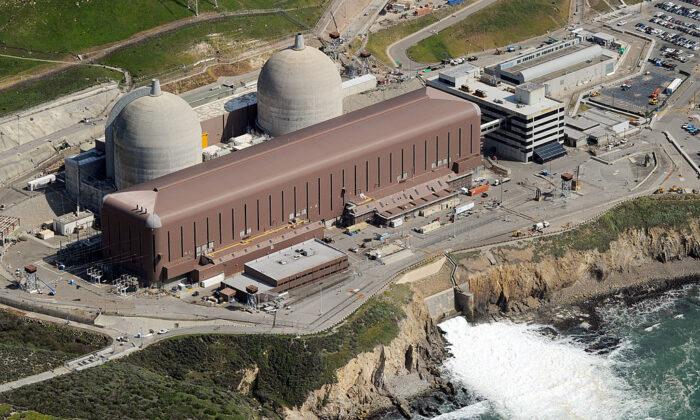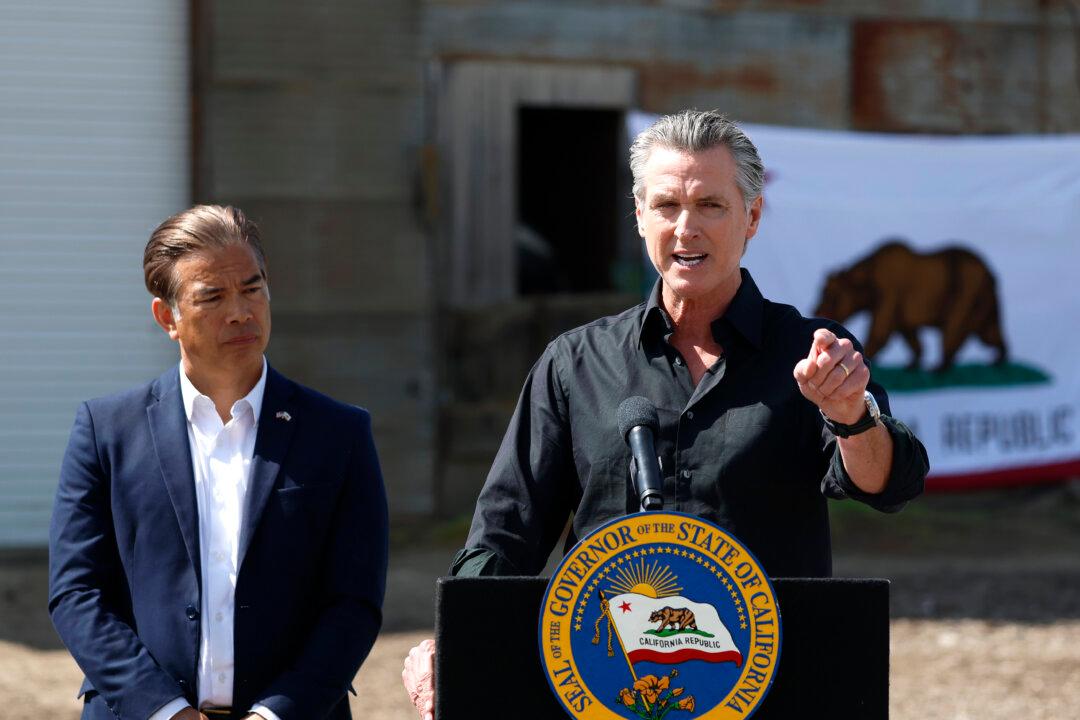With renewable energy sources failing to deliver enough power to supply demand, evolving political narratives have altered plans for nuclear power plants in California and beyond.
“Reality happened,” Jacopo Buongiorno, director of the Center for Advanced Nuclear Energy Systems and professor of nuclear science and engineering at the Massachusetts Institute of Technology (MIT), told The Epoch Times. “The renewable energy sources that some were expecting to replace nuclear power failed to reliably supply enough power.”
While Germany—a forerunner in the global movement to cut carbon emissions—bids farewell to nuclear energy April 15 after decades of debate, California and other countries equally eager to reach their climate goals are taking an opposite approach, extending and expanding their reliance on this carbon-free energy source.

The European Union relies on nuclear power to supply approximately 25 percent of its energy, according to the World Nuclear Association. Several European nations are embracing nuclear power, with 170 reactors in operation across 18 countries, according to the European Nuclear Society. France leads the pack with 56 nuclear reactors powering its grid, with Russia’s 37 placing second.
California in Dilemma
California, armed with the most aggressive climate initiatives in the United States, is also caught in the dilemma.Its lone nuclear energy plant at Diablo Canyon near San Luis Obispo has been central to the debate about whether the Golden State can afford to move away from nuclear energy while trying to cut emissions.
After years of promises that renewables, primarily solar and wind, would replace traditional power supplies, statistics for 2022 from the California Energy Commission show that these technologies have not produced enough energy to reliably power the grid.
California is regarded as a pioneer in nuclear energy, being the first state to adopt the technology and harness its potential to power cities in 1957. Much has changed since then, with plants opening throughout the next decades, only to be shut down as political whims ebbed and flowed.
“Unfortunately, California is not a friendly state regarding nuclear power,” Jasmina Vujic, director of the nuclear science and security consortium and professor of nuclear engineering at the University of California–Berkeley, told The Epoch Times in an emailed statement. “The Diablo Canyon Nuclear Power Plant was barely saved from shut down.”
Gov. Gavin Newsom ran his 2016 campaign with the promise of closing Diablo Canyon.

Responsible for 8 percent of the state’s electricity production, it was threatened with closure after the California Public Utilities Commission unanimously approved in 2018 to shut it down when its federal license expires in 2025.
But Newsom moved from recommending closure to being an advocate for its survival, following the passage of President Joe Biden’s 2022 $1.2 trillion Infrastructure Investment and Jobs Act, which allocated $6 billion to bail out nuclear power plants and prevent closures.
The governor said in April 2022 that Diablo’s operator—Pacific Gas and Electric (PG&E) —should pursue the federal funding and noted the agency would be missing an opportunity if it failed to secure assistance to keep it operational.
Newsom’s abrupt change of course offers a chance for nuclear power to continue in California.
The licensing process was reignited in 2022 with PG&E’s application for renewal.
Proponents of Diablo Canyon additionally say it could be a source of low-cost desalination for California, providing much-needed water to agricultural users and municipalities.
While a series of projects were developed in California, the state placed a moratorium on licensing and construction of nuclear power projects in 1976 with the passage of the Warren-Alquist Act.
Should California Keep Its Last Nuclear Plant?
Some experts suggest that the best course of action is to renew the federal license, as the plant is a consistent source of energy for the grid.A staff analysis conducted by the energy commission recommending extending the operation of Diablo Canyon through 2030 was approved in February.
“The determination is based on data showing California risks energy supply shortfalls during extreme weather events,” Lindsay Buckley, a commission spokesperson told The Epoch Times in an emailed statement April 7.
Buongiorno, the MIT professor, agreed.
“Extending the Diablo Canyon license is a positive thing for California, for the reliability of its grid and its cost of energy,” he told The Epoch Times.
There are 92 nuclear reactors operating in 54 power plants in 28 states, according to the U.S. Energy Information Administration, a statistical agency of the Department of Energy, supplying approximately 20 percent of the country’s energy.
Other states, according to nuclear energy experts and university professors, avoided the political headwinds for nuclear development that stymied California’s program.
Opportunities From New Technologies
New technologies are offering opportunities for military and civilian applications, according to experts, and there could be revolutionary new products on the market in the next few years.“Very small reactors—nuclear batteries—with special missions are being developed in coordination with the U.S. Army,” Buongiorno said. “These are easier to construct, factory built, transportable, and could be online as early as 2026.”
These batteries would be used to power remote operating stations and provide heat and power for a variety of applications where traditional power sources are unavailable.
While the U.S. leads the world in new, portable nuclear reactor technology like the batteries MIT is studying, other countries are utilizing nuclear power capabilities. Approximately 440 nuclear reactors are in operation around the globe, supplying nearly 10 percent of the world’s energy.
Other nations are superior to the United States in terms of research, development, and export of nuclear technologies, but the country maintains a competitive advantage with portable reactors, according to Buongiorno.
“China is incredibly capable with nuclear energy, and they are frankly ahead of us in technology development, with the notable exception of nuclear batteries,” he said.
Over the past decades, China and Russia have exported technology to and assisted nuclear development efforts in countries including India, Bangladesh, and Turkey. These relationships have implications for U.S. foreign policy objectives, according to political analysts.
Some say opportunities exist for the industry if the United States can capitalize on exports.
“It’s in the best interest of the U.S. to enter the nuclear technology export trade,” Buongiorno said.
Recognizing the complexity of the nuclear dilemma, U.S. senators introduced a bipartisan bill in 2021 aiming “to reestablish United States global leadership in nuclear energy, revitalize domestic nuclear energy supply chain infrastructure, support the licensing of advanced nuclear technologies, and improve the regulation of nuclear energy.”
Hearings were held in February 2022, with no updates in the last year.





